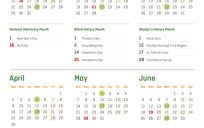![]()
Many people have disabilities. According to the 2010 census, almost fifty-seven million Americans (20%) have been diagnosed with a mental or physical disability. Though some disabilities are obvious most are hidden, and the likelihood is that at some point, you are going to be interacting with people who have a disability. It may leave you feeling somewhat uncomfortable trying to show dignity and respect without coming across as condescending. Perhaps the first step is to use positive terminology or what is called “person-first language.”
Language can be a powerful force; the way we talk about people can lead to labeling, and labels influence attitudes. The language we use related to disabilities has the power to change perceptions or reinforce stereotypes.
Person-first language affirms the individual you’re speaking with as a person rather than focusing on their disability. The idea is to use a sentence structure that names the person first and the condition second. After all, we are all so much more than our disabilities! The experiences, talents, and abilities of those of us with disabilities make up who we are, just as they do everyone else. If you were hiring someone with a broken leg, you wouldn’t focus on their injured leg and ignore the other qualities making them a good choice for the job.
When speaking of someone with a disability, use affirmative phrases, not negative descriptions. For instance, don’t use phrases like blind, handicapped, deaf, or afflicted by a disease. Instead say, “a person who is blind or has a visual disability, a person who has cerebral palsy, or a person with bipolar disorder.” Recognize the person, not the disability.
While most persons with disabilities prefer person-first language, there is an alternative approach called “identity-first” language, as it places the identifying condition before the personal term. It can be confusing knowing what approach the person you’re speaking with would prefer. Listen and follow their cue, but the best way to treat someone with a disability…is just to treat them like a person!
Christine Wistrom is part of the GovLoop Featured Blogger program, where we feature blog posts by government voices from all across the country (and world!). To see more Featured Blogger posts, click here.





Leave a Reply
You must be logged in to post a comment.